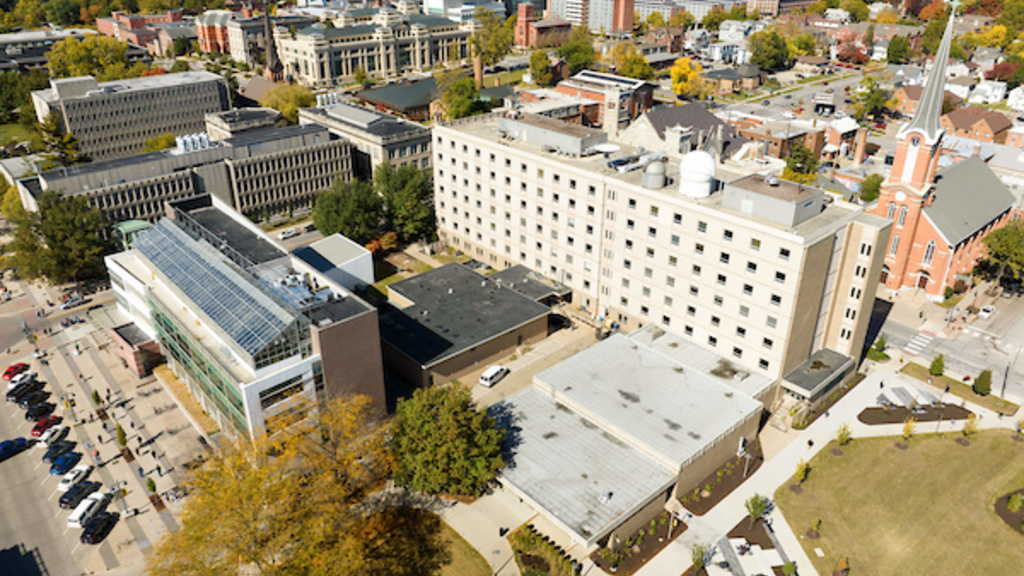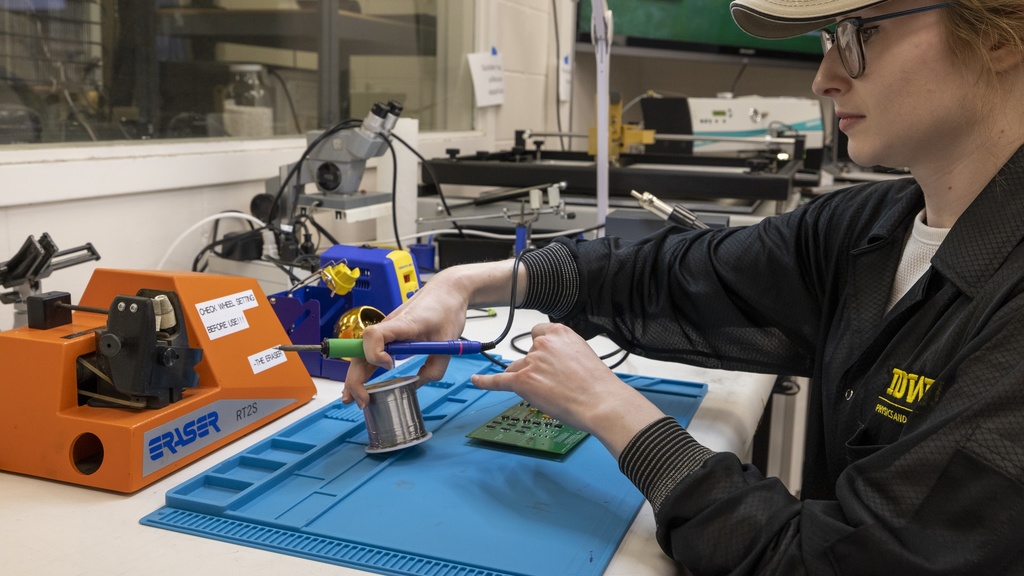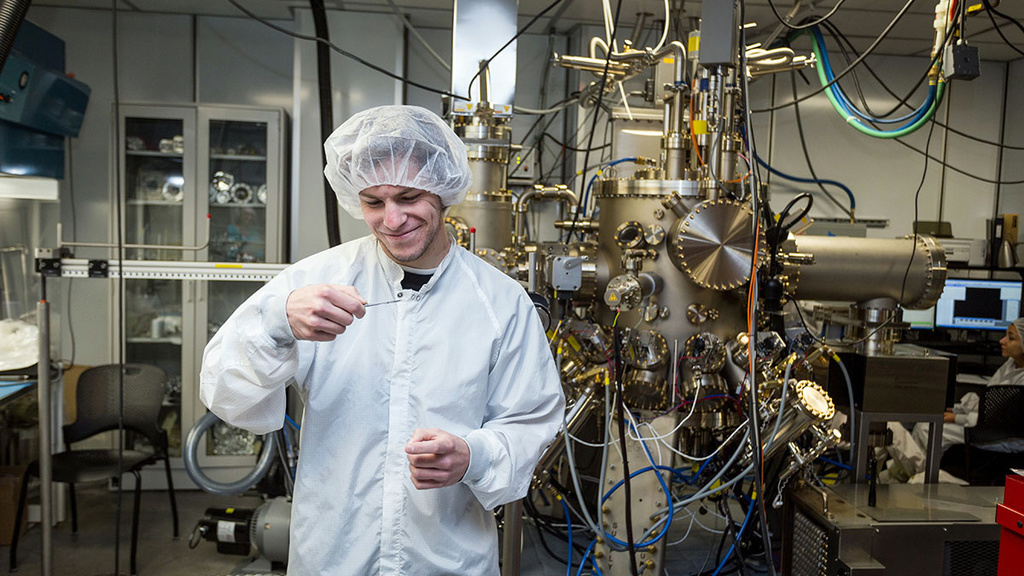Main navigation
Buildings

Van Allen Hall (VAN)
Van Allen Hall is an eight-floor building at 30 North Dubuque Street, Iowa City where our department has offices, classes, colloquia, and seminars. Most of our faculty have offices here. Approximately half of our research labs are located in Van Allen Hall.
Iowa Advanced Technology Laboratories (IATL)
The Iowa Advanced Technology Laboratories (IATL) at 205 North Madison Street, Iowa City is a three-floor building with research labs such as the Molecular Beam Epitaxy Facility (MBE), microfabrication facilities (MATfab), condensed matter and optical labs, and some of our faculty offices. This building was designed by world-renowned architect Frank Gehry.

Sciences Library
The Sciences Library is located Phillips Hall and the Biology Building set back from Iowa Avenue. There is one accessible entrance into the building from the south via a level approach (as if coming directly from Iowa Ave). The Sciences Library is three floors and there is an elevator directly to the right upon entering the building.
Van Allen Observatory
The Van Allen Observatory (VAO), located on the roof of Van Allen Hall, is open to students and community members as it is used for undergraduate astronomical laboratories and public outreach. First constructed in its early iterations in 1972, the VAO is a 17-inch Corrected Dall-Kirkham reflecting telescope, named after one of the greats of space science, the Physics and Astronomy Department’s Professor James Van Allen.
Labs and Service Centers
Testing Centers
The Testing Centers provide temperature, vibration, shock, and mass properties testing for spaceflight instrumentation.

Machine Shop
The shop is a source for custom part prototyping and machine part problem-solving. Its services include machining, fabricating, welding, design, and precise measurement of mechanical parts and assemblies.

Electronics Assembly Shop
The EAS has the equipment and expertise needed for high-reliability electronics assembly. It has been building spacecraft instrumentation for over 40 years, beginning with spaceflight hardware for Dr. James Van Allen.

MBE/Characterization Lab
The Molecular Beam Epitaxy Laboratory (MBE), located in the Iowa Advanced Technology Labs (IATL), is part of the Iowa Center for Research, Exploration, and Advanced Technology in Engineering and Sciences (Iowa CREATES), and managed by the Department of Physics and Astronomy.
Quality Assurance
Quality Assurance (QA)determines the effectiveness and compliance of the Quality Management System to the ISO 9001 standard. The QA facilitates the inspection and provides technical oversight to the manufacturing build and testing on mechanical, electronic components, assemblies, and products. The QAM is responsible for developing, implementing, and maintaining quality documentation for spaceflight projects and service centers.
Electronics Design
A collaborative effort between the Department of Chemistry and the Department of Physics and Astronomy, the Electronics Repair and Calibration Lab is a resource for assistance in the repair, maintenance, fabrication, or purchase of electronics-related instrumentation and components.